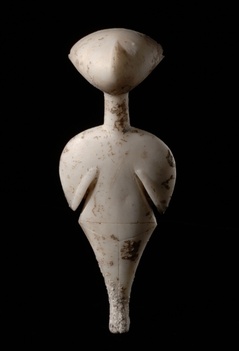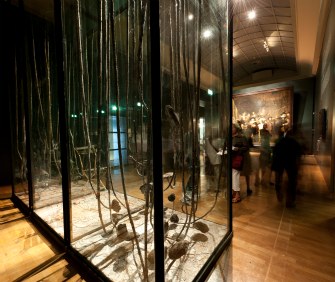I have a trifle in this morning’s Wall Street Journal, an “Icon” piece called “Object of Desire: A Bed (Not for Sleeping).” It’s about the gorgeous late 17th century lit a la duchesse now on view at the Getty in the exhibition, “Paris: Life and Luxury,” and below.
![]() I say trifle, because the article is so short — but I must also commend the WSJ for publishing pieces like this at all, focusing as it does on an object that’s not even for sale.
I say trifle, because the article is so short — but I must also commend the WSJ for publishing pieces like this at all, focusing as it does on an object that’s not even for sale.
These Icon pieces (though sometimes about things that are for sale) are akin to the WSJ’s longer, and even better, weekly column called “Masterpiece,” which I have praised here before. It used to have the apt subtitle “Anatomy of a Classic,” but that has been dropped though it explains exactly what the column does.
The WSJ also had a review of the Paris show in Thursday’s paper, which explicates how the exhibition was organized: it shows the culture of the period explained in the course of a single day. The first gallery is dominated by the bed. What caught my attention when I first read the press release about the exhibition was the fact that, though the Getty had bought the bed in 1979, it had never until now been shown. I had to ask what that was all about, and that’s when I discovered how fragile the piece is. (PR lesson: That fact, btw, is also one of the hooks that interested the WSJ editors.)
But back to the exhibit. When I was at the Detroit Institute of Arts recently, I wanted to see everything in its great collections, of course, but I also specifically wanted to see the museum’s European decorative arts treasures. When those collections were reinstalled a few years ago, I had recalled, the museum had taken a different approach, using some sort of table, with a film, to explain how pieces would have been used. The description (which I saved) called these galleries “Fashionable Living” and “Splendor by the Hour.”
Sure enough, when DIA director Graham Beal showed me these galleries, they are a bit like the Getty exhibit. And the Getty, Beal told me, admits it borrowed the idea from the DIA.
In these cases, the approach works: both museums have the goods to make it so.
Photo Credit: Courtesy of the Getty Museum





 But there is a huge opportunity too. So forget about the knee-jerk reactions others have expressed about how putting contemporary art into the Whitney “outpost” turns it into a stepchild, or how Met will lower its quality standards to fill those galleries.
But there is a huge opportunity too. So forget about the knee-jerk reactions others have expressed about how putting contemporary art into the Whitney “outpost” turns it into a stepchild, or how Met will lower its quality standards to fill those galleries.